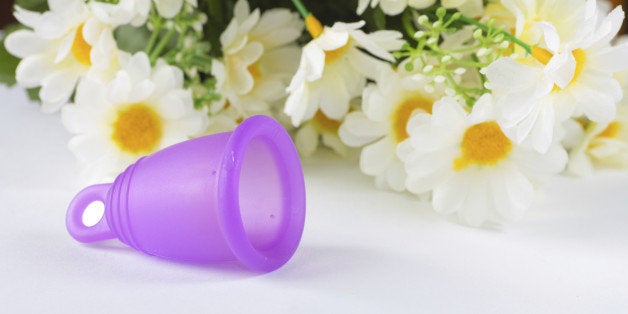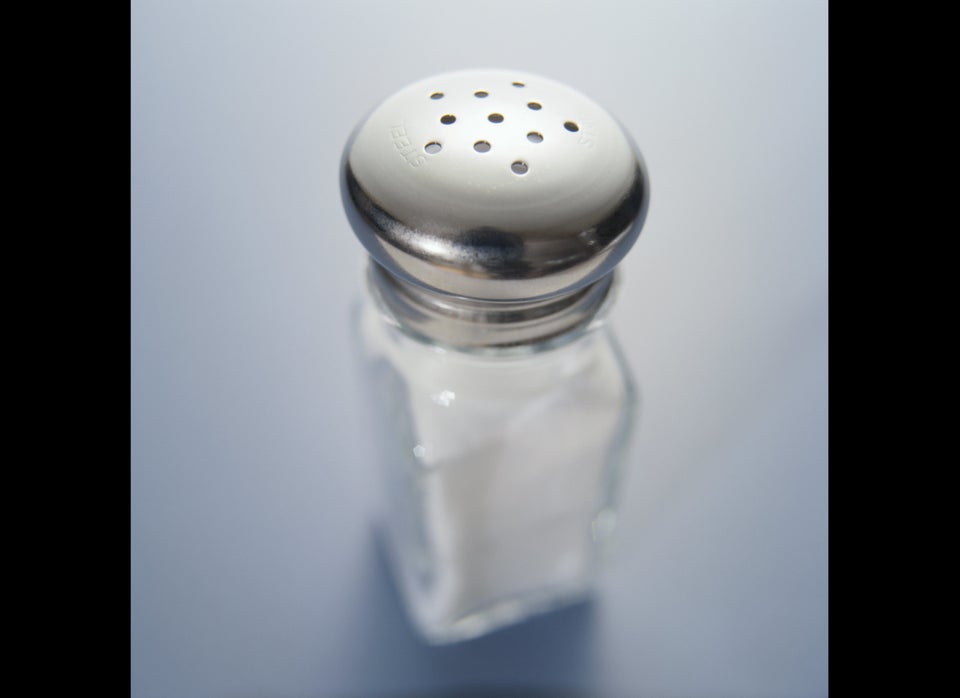
Maryann Flasch, a 32-year-old office manager from Austin, Colorado, used to suffer from vaginal itching, dryness and infections when she got her period, which she attributed to using tampons and pads. She had resigned herself to buying tube after tube of topical painkillers -- until she discovered the menstrual cup.
“I suffered for years with the side effects of using tampons/pads because I didn't know there was another option,” Flasch wrote in an email to The Huffington Post. "Not only do [menstrual cups] reduce garbage and mess, but they are a lifesaver for women that find tampons and pads to be highly irritating."
Sara Austin, a 25-year-old occupational therapist from Gainesville, Florida, also says that cups are easier to use than tampons and pads. She cited relief from vaginal dryness -- as well as a more pleasant olfactory experience.
“Tampons/pads tend to cause an unpleasant odor after a while, and I have yet to experience that with my menstrual cup,” Austin wrote in an email to HuffPost.
While most women in the U.S. and Europe use sanitary pads or tampons when they’re on their period, a small but vocal minority of women are sounding a cri de coeur for their beloved menstrual cups.
For the uninitiated, menstrual cups are goblet-shaped receptacles made out of non-toxic, non-absorbent and flexible materials such as silicone. They are inserted in the vagina to collect period blood. Cups can be reused for up to 10 years, and at around $30 to $40 apiece, they're more affordable and eco-friendly than cotton or synthetic single-use products.
Beth Croft, a 38-year-old photographer and yoga teacher who splits her time between London and San Juan del Sur, Nicaragua, says she loves her menstrual cup because it can be left in place for up to 12 hours at a time, which is especially helpful when she visits places where access to public restrooms can be dicey. Croft began using a menstrual cup eight years ago, when she traveled around India for a month. After her trip, she continued to use it and says that the cup's environmental impact (or rather, lack thereof) is one of the biggest arguments for using one.
"Being very eco-conscious, I had always been bothered by the amount of sanitary products that must be used throughout the world, so it really felt like a revelation,” Croft wrote in an email to HuffPost. "It took a little getting used to, but it is without a doubt one of the best inventions, and I have since encouraged many family and friends to make the switch.”
The device also improves the lives of women in developing countries. In a recent HuffPost blog post, international women’s rights advocate Sabrina Rubli described how the silicone receptacle is helping poor girls in East Africa and elsewhere deal with their periods. Without menstrual cups, they often have to resort to using newspapers, rags, leaves and even mud to absorb the blood, which puts them at risk of infection and makes attending school difficult, if not impossible.
Menstrual cups come with other benefits as well. Some women say they help relieve cramping. Kelly Bailey from Newport, Rhode Island, experienced extremely painful cramps before she bought her Diva Cup.
"I used to have terrible, terrible cramps,” Bailey told HuffPost. “The first time I used a menstrual cup, the cramps were much less severe … I felt so much better.”
Others ditch tampons over concerns about toxic shock syndrome, a rare but serious disease that can occur when the bacteria Staphylococcus aureus become concentrated in the body and that has in the past been linked to tampons.
Because they are made of materials like silicone and create airtight seals inside the vagina, menstrual cups don't encourage bacterial growth, says Dr. Philip M. Tierno Jr., a microbiology professor at New York University and author of the book The Secret Life of Germs.
Tampons are no longer made with the synthetic fibers that were thought to increase the risk of TSS, and tampon safety is regulated by the Food and Drug Administration. In fact, the risk of contracting TSS is so small these days that the Centers for Disease Control and Prevention no longer even tracks it. But for some women, peace of mind can be an important motivator: Janaye Murphy, a 29-year-old doula from San Francisco, says she loves her cup because she can leave it in longer than a tampon "without worrying about TSS."
While menstrual cups have clear benefits, not everyone's a fan. Some women who try them out never manage to adjust to them. Rev. Kimberly-Ann Talbert, 60, of Los Angeles, tried the Tassaway, a type of menstrual cup that is no longer manufactured. She says she found the cup "difficult to insert and a bit uncomfortable."
"Taking them out was difficult as they were apt to spill their contents, making for a mess,” Talbert said. She’s sticking with pads for now.
She's not the only woman who admitted to experiencing a few leaks before learning how to insert and remove a menstrual cup properly. When it's time to empty a cup, a woman pours the collected blood into the toilet, washes the cup in the sink with warm soapy water, and then reinserts it into her vagina. If she happens to be somewhere where she can't wash the cup, she can just empty it out, wipe it off with some toilet paper and then reinsert. The process is more hands-on than learning how to use a tampon or pad, and because cups collect -- not absorb -- blood, spills and leaks can be somewhat dramatic.
That airtight seal Tierno mentioned can also get users in trouble: In a single-patient case published in the International Journal of STD & AIDS, a researcher writes about a 20-year-old patient whose Mooncup was stuck so far up her vagina that even the doctor had trouble prying it away.
But most of the research comparing cups to other menstrual products find that women either like them as much as tampons and pads or prefer them over other options.
